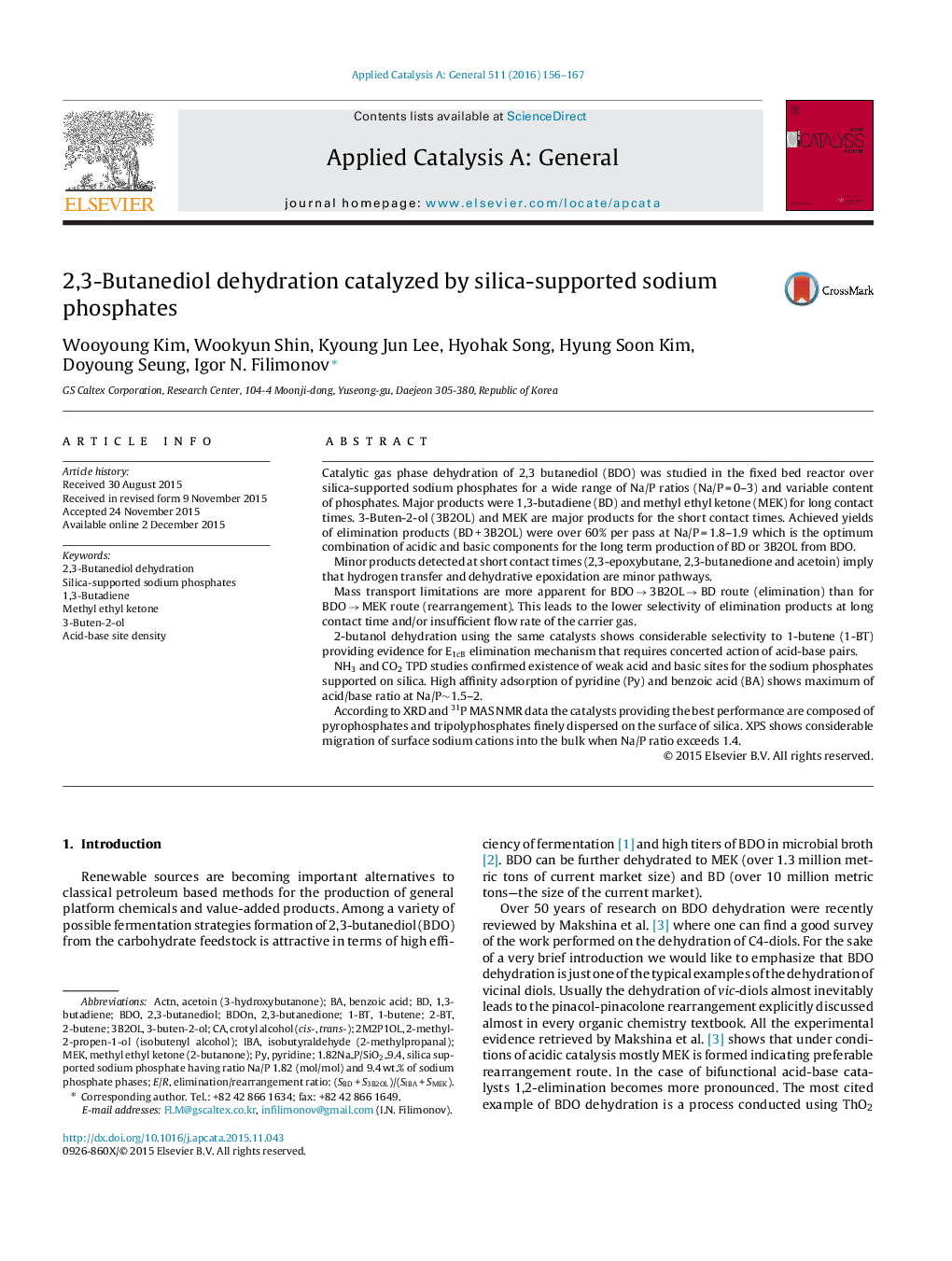| کد مقاله | کد نشریه | سال انتشار | مقاله انگلیسی | نسخه تمام متن |
|---|---|---|---|---|
| 38982 | 45799 | 2016 | 12 صفحه PDF | دانلود رایگان |

• Silica-supported sodium phosphates show excellent activity and stability in the dehydration of 2,3-butanediol.
• Product pattern depends on contact times and Na/P ratio.
• For a long contact time 1,3-butadiene and 2-butanone are dominating; for a short one—3-butene-2-ol and 2-butanone.
• The highest (3–3.8) {butadiene+3-butene-2-ol}/2-butanone ratios are observed for the catalysts having Na/P ratios within 1.8–2.
• Balance of the acidic and basic sites depends on Na/P ratio. The highest values of the acid/base density ratio correspond to 1.5 < Na/P < 2.
Catalytic gas phase dehydration of 2,3 butanediol (BDO) was studied in the fixed bed reactor over silica-supported sodium phosphates for a wide range of Na/P ratios (Na/P = 0–3) and variable content of phosphates. Major products were 1,3-butadiene (BD) and methyl ethyl ketone (MEK) for long contact times. 3-Buten-2-ol (3B2OL) and MEK are major products for the short contact times. Achieved yields of elimination products (BD + 3B2OL) were over 60% per pass at Na/P = 1.8–1.9 which is the optimum combination of acidic and basic components for the long term production of BD or 3B2OL from BDO.Minor products detected at short contact times (2,3-epoxybutane, 2,3-butanedione and acetoin) imply that hydrogen transfer and dehydrative epoxidation are minor pathways.Mass transport limitations are more apparent for BDO → 3B2OL → BD route (elimination) than for BDO → MEK route (rearrangement). This leads to the lower selectivity of elimination products at long contact time and/or insufficient flow rate of the carrier gas.2-butanol dehydration using the same catalysts shows considerable selectivity to 1-butene (1-BT) providing evidence for E1cB elimination mechanism that requires concerted action of acid-base pairs.NH3 and CO2 TPD studies confirmed existence of weak acid and basic sites for the sodium phosphates supported on silica. High affinity adsorption of pyridine (Py) and benzoic acid (BA) shows maximum of acid/base ratio at Na/P∼1.5–2.According to XRD and 31P MAS NMR data the catalysts providing the best performance are composed of pyrophosphates and tripolyphosphates finely dispersed on the surface of silica. XPS shows considerable migration of surface sodium cations into the bulk when Na/P ratio exceeds 1.4.
Figure optionsDownload high-quality image (119 K)Download as PowerPoint slide
Journal: Applied Catalysis A: General - Volume 511, 5 February 2016, Pages 156–167